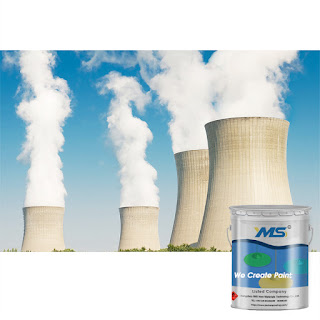The type of coating from the professional point of view, can be said to be diverse, and high temperature resistant coating as an indispensable coating type in the coating industry, according to temperature, performance, application scene, there are many types of special coatings, because of these, the choice of high temperature resistant coating, it is suggested from the following four aspects to consider.
1. Temperature Range
When choosing high temperature resistant coatings, the working temperature range should be considered first.At lower temperatures (below 400°F), organic materials may be used.The use of organic and inorganic materials in high temperature coatings can provide many benefits.Like gloss finishes, or for example no heat curing requirements.Above 400°F, organic matter decomposes.Therefore, it relies heavily on inorganic materials.Inorganic materials such as silicone and ceramics have high temperature resistance.Extreme temperature tolerance, however, comes at a price.High temperature coatings using inorganic materials usually require heat curing or baking.
2. Application characteristics
Application characteristics should be a major consideration when selecting high temperature resistant coatings.There are many "thin film" high temperature coatings (0.5-1.5 mil DFT) currently on the market.These coatings require a relatively thin film to remain flexible at high temperatures without cracking.Thin film can be difficult to implement, especially in the case of maintenance coating.A thinner choice (2-16 mil DFT) compared to our 827-HB series is usually preferred.Thick films or high strength high temperature coatings must have excellent flexibility to achieve higher film configurations at extreme temperatures.High build capacity is required because they allow components to have a larger barrier and to last longer.In addition, high build capabilities provide greater flexibility in the application process.
3. Coating environment
Another major consideration is the coating environment.We can divide the coated environment into three categories: indoor, outdoor light and outdoor heavy service.
Indoor high temperature paint needs to include fire, stove, etc.Lighter coating options are available for most indoor needs.In indoor environments, thermal curing is usually not a problem because there is no water exposure.
Light outdoor services include grill, smoker, fire pit, etc.These services require a thicker coating to protect against UV rays and rain.When dealing with rainwater, it becomes very important to select the coating with the optimal temperature range.If the selected coating requires thermal curing, ensure that this temperature is reached before prolonged exposure to water.
Heavy outdoor service is considered very demanding and requires industrial high temperature coatings.An example can be found in the Automotive Services category.Many high-temperature automotive coatings, such as exhaust system coatings or engine manifold, require industrial-grade performance due to road salt.Very demanding service requirements have also been found in large chemical treatment and refining facilities.In these facilities, industrial high temperature coatings are used for stacking, kilns and under insulation.Corrosion under insulation (CUI) poses a great threat to the steel tubes below.Please come back later for more information on Cui Coatings.
4. The aesthetic
The last thing to consider when choosing high temperature resistant coatings is beauty.Color stability in high temperature coatings can vary greatly from manufacturer to manufacturer.The selection of a coating that has not only the highest temperature, but a stable color at that temperature is also important for several reasons.For beginners, it ensures that the painting equipment holds the color of your choice.It can also promote safety.Color heat pipes in oil refineries and chemical processing plants must maintain their color purity.Paint color can indicate pipe temperature or internal cargo.Therefore, the choice of color stability of high temperature coating become necessary.

Comments
Post a Comment